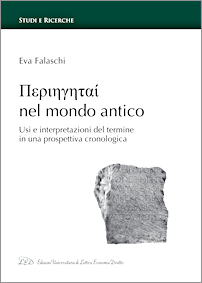Periegetai nel mondo antico. Usi e interpretazioni del termine in una prospettiva cronologica
by Falaschi Eva, Falaschi Eva, Falaschi Eva
This work offers, through an analysis of literary and epigraphical sources, an overview of the use of the word periegetes since its first appearance in the first century B.C., including late interpretations and usages from the Byzantine and modern age. In particular, the problem of the use of the word to indicate the Hellinistic writers of historical and antiquarian works is addressed, considering the possibility that it was typical of the Roman Imperial period and connected to cultural phenomena widespread in this era. In addition, the use of periegetes for figures who accompany strangers during the visit of Greek cities and sanctuaries is discussed again, showing the differences among them and the difficulties in bringing together the sources, as is often done. In this context, special attention is paid to Plutarch of Chaeroneia, who mentions the word several times and in relation to different figures, so that it is possible to draw detailed profiles of these persons. The use of the term in epigraphies is also reconsidered: these are generally placed alongside literary evidence but seem indeed to give back a different image of the functions held by the mentioned characters. Finally, the relationship between periegetes and exegetes is addressed, especially in relation to Pausanias, who uses this latter word to indicate informants and written sources.
- Publishing house LED Edizioni Universitarie
- Year of publication 2021
- ISBN 9788879169745
- Foreign Rights Valeria Passerini / Tiziana Battaglia
- Price 29.00 €
Falaschi Eva, Falaschi Eva, Falaschi Eva
Eva Falaschi, research fellow at the Scuola Normale, is visiting scholar at the Getty Research Institute, fellow at the Center for Hellenic Studies and scientific coordinator of the project OltrePlinio, dedicated to the study of Pliny’s Naturalis Historia and to the development of digital tools. She is working on a book focusing on the reception of painters in Plutarch and on a commented edition of ancient art treatises and biographical works on Greek artists.






